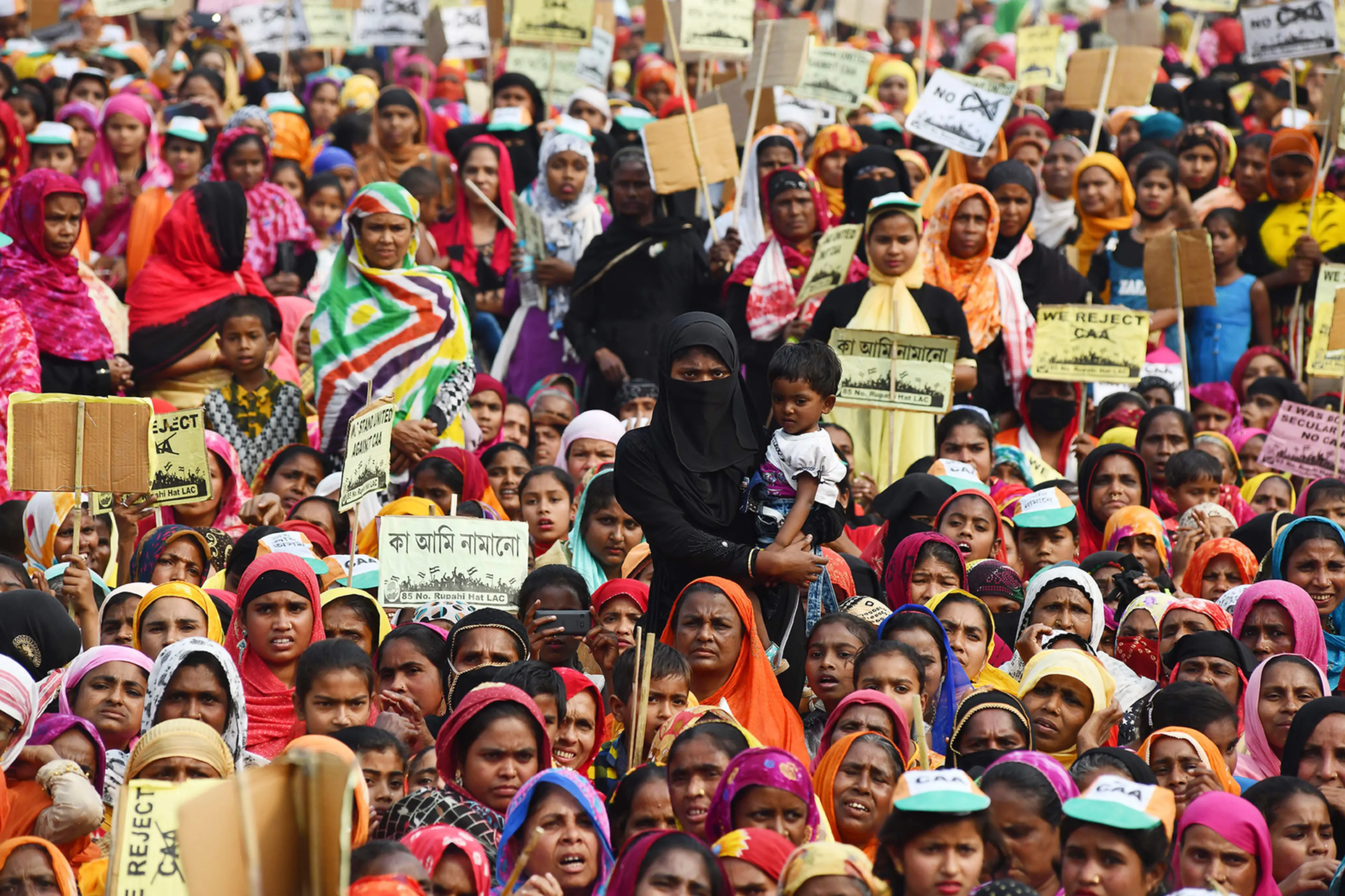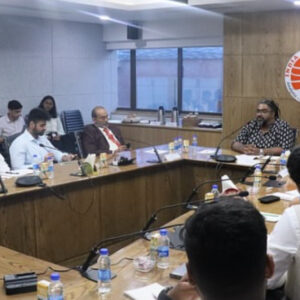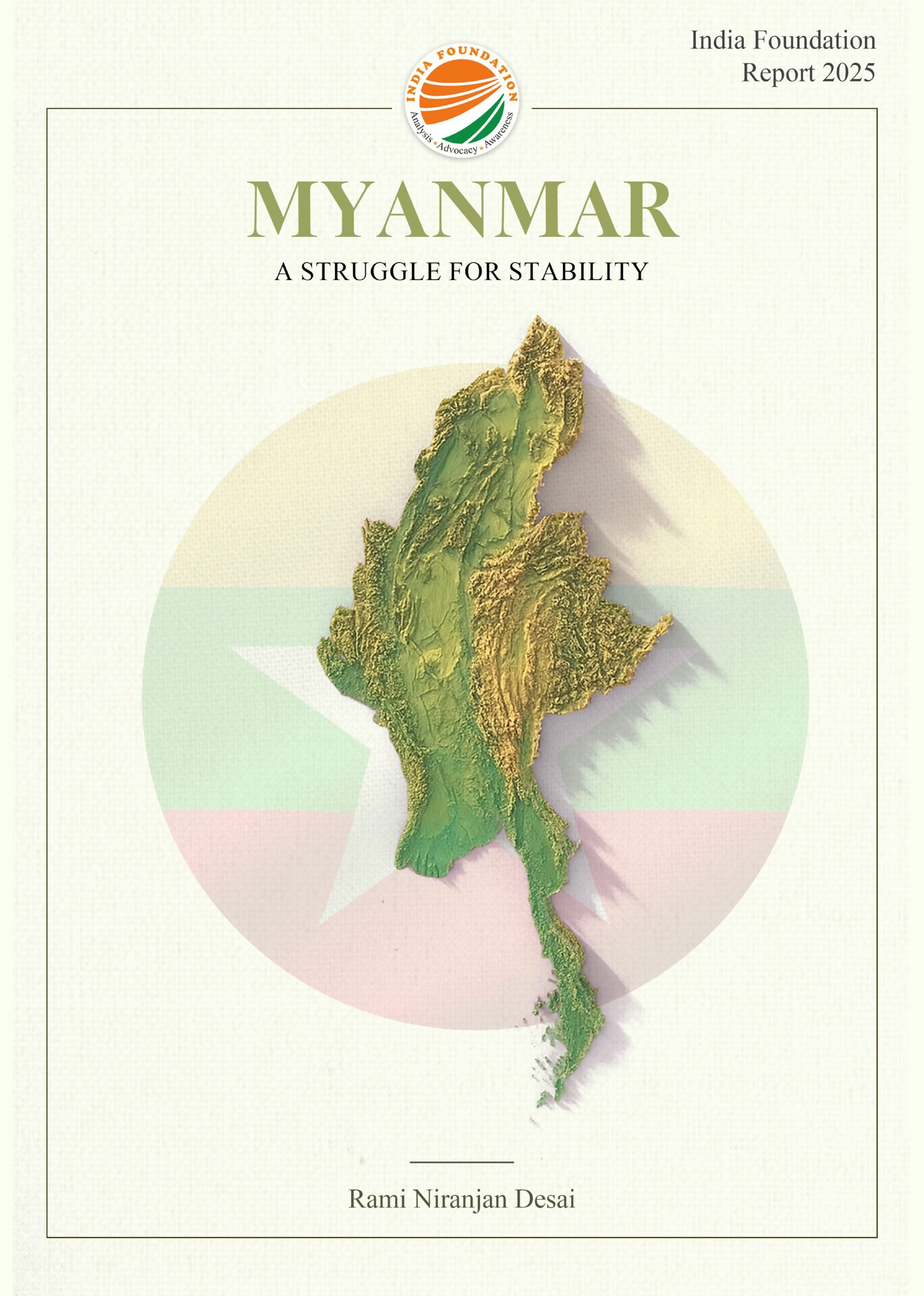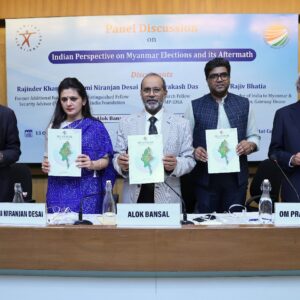Introduction
Kerala, once celebrated for its secularism and social harmony, is now facing a severe national security threat due to rising Islamist radicalisation. Once marked by literacy and communal peace, the state has become a significant hub for extremist activity in India, with links extending to Pakistan’s ISI and terror financing networks in West Asia, Gulf countries, and Bangladesh. This report examines the rise of radical Islamic organisations in Kerala, especially the Popular Front of India (PFI), their role in spreading extremist ideologies, and the growing influence of such networks in other states like West Bengal.
The Popular Front of India (PFI): Origins and Ideological Foundations
Throughout the 1990s, the violent political tactics of mainstream Left parties, particularly in the districts of Kannur, Malappuram, and Kasaragod, as well as their surrounding areas, sparked religious polarisation in Kerala. The frequent violence perpetrated by the political workers of the Left party (LDF Front) led to the rise of extremist right Islamic organisations. The Naddapuram Defence Forum, commonly known as the National Defence Force (NDF), emerged as a local Muslim rights party and quickly gained significant support among Muslim communities that had suffered the brunt of the violence in Kerala. NDF managed to establish a substantial presence by recruiting from a large pool of vulnerable Muslim youth. The ensuing political climate facilitated the activities of Islamic political organisations, further exacerbating the radical and extremist agenda.
Kerala’s transformation into a hotspot for radical Islamist activity is neither sudden nor isolated. Over the years, Islamist organisations, ranging from Jamaat-e-Islami to the banned Students Islamic Movement of India (SIMI), to NDF, and the Peoples Democratic Party (PDP) led by Islamic cleric Abdul Nazer Mahdani, along with other smaller parties, have proliferated and created an ideological ecosystem that laid the foundation for groups like the Popular Front of India (PFI) to thrive.
The now-banned PFI, formed in 2006 through the merger of three radical organisations- the National Development Front (NDF) in Kerala, Manitha Neethi Pasarai (MNP) in Tamil Nadu, and the Karnataka Forum for Dignity (KFD)- is perhaps the most influential and dangerous Islamist organisation that operated in South India. Its stated objective is to resist the rise of Hindu nationalist politics in India, but beneath this veneer lies a deeper agenda of Islamisation and ideological warfare. The National Investigative Agency (NIA), in one of its charge sheets filed in 2022, has mentioned that PFI aimed to establish Shariah-based Islamic rule in India by the year 2047 through various subversive means, including political subversion.
PFI’s roots are closely linked to SIMI, a proscribed terrorist organisation that birthed another proscribed terrorist organisation, the Indian Mujahideen (IM). Many of PFI’s founding members were SIMI operatives, including EM Abdul Rahiman (former SIMI general secretary), E Aboobacker (SIMI’s Kerala chief), and P Koya, who was instrumental in building both SIMI and NDF. These individuals carried forward SIMI’s legacy of militant Islamism under a new brand.
The PFI’s hierarchical and cell-based structure allows decentralised decision-making while maintaining ideological cohesion. Through its affiliates, including the Social Democratic Party of India (SDPI), Campus Front of India (CFI), National Women’s Front (NWF), and NGOs like Rehab India Foundation, it has established a grassroots presence across 22 Indian states. PFI cadres are known to mobilise in slums, urban centres, educational institutions, and mosques, promoting their agenda under the guise of legal aid, charity, and social work. This effort has created a comprehensive socio-political network that can penetrate all layers of Muslim society. On the surface, these units advocate for civil rights, legal aid, and educational equity, but deeper investigations revealed that this was merely a façade to conceal more radical agendas.
Radicalisation and Recruitment:
The PFI and its political wing, the SDPI, employ a sophisticated strategy to radicalise disenfranchised Muslim youth. Drawing on Salafi-Wahhabi ideology, they utilise religious and political narratives to spread extremist views across slums, campuses, urban centres, and rural districts. Though inspired by Salafi beliefs, the PFI recruits from diverse Islamic sects, uniting them under the vision of an Islamic Caliphate governed by Sharia.
PFI runs parallel ideological movements in colleges and rural societies, promoting anti-democratic narratives by equating constitutional democracy with kufr (apostasy). A former ISIS recruit from Kerala revealed continued allegiance to ISIS ideology despite de-radicalisation programs, citing indoctrination through encrypted platforms by Gulf-based Salafi clerics.
The remote village of Attakad in Kerala showcases the deep roots of Salafi radicalism. Influenced by Yemeni ideology similar to that of the Houthis and ISIS, it attracted a Sri Lankan cleric linked to the 2019 Easter bombings, who recruited locals for ISIS. Although many families fled, extremist beliefs persist.
PFI’s links to global jihadist movements are well documented. Members have been arrested for ISIS recruitment and terror training camps, with ties to ISKP, AQIS, and incidents like the Bengaluru café blast.
Key Radicalisation Channels
- a) Digital and Religious Literature: Radical content circulates widely, both online and offline, primarily through social media platforms like Facebook. Gulf-based pages promote Salafi ideology, particularly regarding Sharia compliance in business and society. Institutions that advance Sharia research further reinforce exclusivist thinking.
- b) Travel to Conflict Zones: Dozens from Kerala have joined ISIS in Syria, Iraq, and Afghanistan, often referred to locally as Mujahids, indicating tacit approval within segments of the community.
- c) Unregulated Madrassas: Many Salafi-oriented madrassas recruit impoverished youth from across India. These institutions promote narrow interpretations of Islam and are linked to Tablighi and Dawah movements, particularly in sensitive states like Assam and J&K.
- d) Goal of Islamic State: PFI and its affiliates aim to establish an Islamic state. They receive funding from Gulf sources through hawala and gold smuggling, targeting Dalits, Christians, and disillusioned youth for religious conversion. Satyasarini, PFI’s educational arm, plays a central role in these efforts, claiming over 3,000 conversions. It preaches strict Salafism and sends recruits abroad for further radical training, with some joining ISIS. Their women’s wing actively conducts college campaigns and provides legal and financial support for converts.
- e) Diaspora Influence: Kerala’s significant Gulf diaspora frequently brings back radical ideologies, intensifying sectarian divides and supporting recruitment efforts.
- f) Campus Radicalisation: SDPI’s student wing has influenced students in professional colleges, leading some to leave due to perceived Sharia violations in co-ed education. The extent of this issue remains unclear due to underreporting.
- g) Islamic Education Networks: Figures like M.M. Akbar (dubbed the “Zakir Naik of Kerala”) run schools that promote Salafi exclusivity. His Peace International Schools have been flagged for communal teachings. Akbar maintains connections with Gulf-based extremists and the Muslim Brotherhood.
International Ties and Gulf Networks
One of the most insidious aspects of PFI’s operations is its connection to international jihadist networks through the Gulf. Handlers based in Qatar, the UAE, and Turkey play a crucial role in the radicalisation process. The organisation has developed strong ties with international Islamist groups, notably those linked to the Muslim Brotherhood and organisations in Turkey and Qatar. Some PFI leaders have maintained connections with clerics associated with Jabhat al-Nusra, now commonly known as Hayat Tahrir al-Sham (HTS), a former Al-Qaeda affiliate in Syria. The now-deceased Aijaz Ahangar, former chief of the Islamic State Khorasan Province (ISKP), was responsible for recruiting approximately a hundred Malayali Muslims into the global Islamic State (ISIS) network through his networks operating out of Qatar and Turkey. This trend of recruitment continues, with ISKP now maintaining a separate Malayalam wing for propaganda and recruitment based in Qatar.
These handlers, often affiliated with the Muslim Brotherhood or other extremist Islamist organisations, preach extremism via encrypted communication and disseminate religious discourses through social media. As mentioned by another former ISIS recruit from Kerala, who during his interrogation confessed that his radicalisation was facilitated online by a Qatar-based handler, he was introduced to purist Salafi Islam and radical interpretations of jihad and Shariah.
According to him, the ideology promoted in these interactions emphasises that democracy is “Kufr” (disbelief) and that Muslims must reject secular democratic governance methods in favour of establishing an Islamic state. This ideology deeply resonates with the PFI’s narrative and enables radicalisation at a deep and persistent level.
Political Penetration and Societal Impact
Though PFI was banned in 2022, its political wing, SDPI, continues to operate freely and spread radicalism. Many former PFI cadres have shifted to SDPI, thus maintaining their ideological mission under a political banner. While overt activities have slowed, their grassroots penetration remains strong. According to some analysts, SDPI utilises democratic platforms not for mainstream political purposes but to spread radical ideologies and assert a Pan-Islamic identity.
SDPI/PFI’s social impact of its preaching has led to glaring visible changes in Kerala. The construction of mosques in Arabian architecture, adopting the Arabic language, and using Arabic as signage on shops and other establishments in Muslim-dominated areas reflect a profound cultural transformation, referred to by many as the “Arabisation” of Kerala’s Muslim community. This shift is driven by massive Gulf remittances, which fund lifestyles, religious institutions, education, and political mobilisation.
The widespread adoption of Arabic customs and dress codes among youth has culturally alienated Keralite Muslims from Indian traditions. This growing obsession with Arab culture is one of the key enablers of radical Islamist narratives, making it easier for organisations like PFI/SDPI to claim authenticity and divine authority in their calls for Sharia and Islamic governance. While Kerala’s traditional Muslim ethos was rooted in Indian pluralism, the rising influence of Arabic/Gulf-influenced Islamist culture has created a societal rupture.
Role of Other Organisations and Resistance from Within
Kerala’s mainstream Muslim organisations have largely distanced themselves from the PFI. The Muslim Coordination Committee, led by the Indian Union Muslim League (IUML), has excluded PFI/SDPI from its fold. However, they are now being compelled to adopt the same extremist political rhetoric for political relevance. The IUML and other Sunni factions have opposed PFI’s ideological extremism and rejected its political vision. However, other Islamic political organisations have been less vocal, partly due to shared ideological spaces with PFI or their reluctance to alienate their voter base. Conversely, institutions like the Muslim Educational Society (MES) and JDT Islam represent a promising counterbalance. These secular Muslim organisations promote modern education and pluralistic values, providing an alternative to madrassas and Islamic seminaries.
The ISI Connection: Pakistan’s Covert War
Pakistan’s ISI has played a pivotal role in promoting radicalisation in India, using Bangladesh and Middle Eastern/ Gulf countries as proxies. The ISI maintains strong ties with Al-Qaeda, ISIS, Hizb ut-Tahrir (HuT), and ABT. Through these organisations, it seeks to exploit India’s communal fault lines and destabilise internal security.
In Kerala, ISI’s influence is channelled through Gulf-based networks. Radical clerics funded by Pakistan-backed NGOs preach Salafist doctrine and provide logistical support to Islamist cells in India. In West Bengal, the ISI operates via Bangladesh, using JMB and ABT as conduits. These groups are involved in counterfeit currency rackets, human trafficking, and arms/narcotics smuggling, all under the ISI’s strategic umbrella.
The ISI’s relationship with global jihadist organisations is symbiotic. For example:
- Al-Qaeda: Pakistan has sheltered Al-Qaeda leaders for years; AQIS now directly targets India.
- ISIS: ISI-supported handlers in the Gulf facilitate recruitment from Kerala and Kashmir.
- HuT: Hizb ut-Tahrir is used as a radicalisation tool in educational campuses and mosques/madrassas.
- ABT operates under ISI’s patronage from Bangladesh and is responsible for cross-border infiltration into Assam, Tripura, Jharkhand, Bihar, and West Bengal.
The Expanding Web of Radicalisation
Kerala’s descent into Islamist radicalisation is not an isolated event but part of a larger pattern of ideological warfare against the Indian state. The PFI may be banned, but its ideology persists through the SDPI and affiliated networks. The Islamist radicalisation that began in Kerala has now spread across multiple Indian states, with West Bengal emerging as a significant new frontier. In West Bengal, the PFI made inroads around 2017-18, establishing sleeper cells and mobilising youth in Muslim-majority areas. In districts like Murshidabad, Nadia, and Malda, the indoctrination patterns followed the Kerala model, emphasising madrassa setups, campus radicalisation, Islamic identity politics, and the denouncement of Indian democracy as Kufr (apostasy).
Radicalisation is taking root along the porous border with Bangladesh. Islamist groups like Ansarullah Bangla Team (ABT), Hizb-ut-Tehrir (HuT), and Jamaat-ul-Mujahideen Bangladesh (JMB) have found safe havens in Bengal’s border districts. These organisations share ideological and operational linkages with PFI/SDPI and benefit from cross-border movement, human trafficking, and the smuggling of arms and narcotics.
The ideological and operational links between Kerala’s PFI networks and Bengal’s radical fringe, enabled by ISI through the Gulf and Bangladesh, pose a serious threat to India’s national security. Despite the ban on PFI, the battle is far from over. Radicalised students, Gulf returnees, and trained operatives continue to operate under various organisational disguises.
The situation in West Bengal is particularly alarming. Its proximity to Bangladesh and a history of neglected border security have allowed Islamist outfits, supported by both state and non-state actors from Pakistan, to establish operational bases. These groups are directly linked to the ideological seeds planted in Kerala and, in some cases, nurtured by extremist currents from the Gulf. The challenge is worsened by a cultural Arabisation that continues to disconnect Indian Muslims from their indigenous roots.
Countermeasures to Dismantle the Radicalisation Web
A comprehensive national policy is needed to address the rising radicalisation. Some immediate countermeasures that can be applied are listed as follows:
- First, secular educational organisations in Kerala, such as the Muslim Educational Society (MES) and JDT Islam, must be promoted aggressively. These institutions are inclusive, modern, and culturally Indian, offering an effective alternative to radical madrassas. They can serve as a powerful force in countering radicalisation through education.
- Second, a central monitoring cell with branches in each of the affected states must be institutionalised. This cell must be dedicated to tracking and debunking misinformation, extremist content, and digital jihadist propaganda. Social media platforms and encrypted apps must also be under constant surveillance in coordination with state police and intelligence agencies.
- Third, genuine intra-faith and interfaith dialogues must be encouraged to amplify the voices of moderate, reformist, and free-thinking Muslims. These conversations are currently absent in most parts of the country, particularly in Kerala and West Bengal, leaving the field open for radical ideologues.
- Fourth, diplomatic pressure should be exerted to minimise West Asia/Gulf-based funding. Additionally, engaging the Gulf countries diplomatically can help identify and curb ISI-related networks targeting Indian nationals.
- Finally, any Islamist political outfit, such as the SDPI, operating under a democratic smokescreen must be strictly monitored. Political legitimacy must not be allowed to become a license for subversive radicalisation.
Conclusion: A Policy Vacuum Amid a Brewing Storm
Kerala’s tryst with radical Islamism is no longer hypothetical; it is real, deep-rooted, and increasingly transnational. The fight against radical Islamism is as much about ideology as it is about national security. Unless India addresses the socio-political ecosystem that enables radicalisation, especially in Kerala and West Bengal, the threat will continue to metastasise. The ideological battlefield is not in the forests or foreign war zones but in urban campuses, small-town mosques, social media platforms, WhatsApp, and other chat groups. A policy vacuum compounds the challenge. Radical elements also exploit the absence of counter-narratives, particularly among isolated and confused Muslim youth.
In an era where asymmetric warfare and ideological insurgency define global threats, India must not underestimate the dangers posed by Indian-born, ISI-enabled, and Gulf-financed radical Islamist networks. Unless we act now, the next wave of radicalised youth will emerge not from the war-torn West Asia but from our very own southern and eastern heartlands. This battle against radicalisation must be fought vigorously to protect the soul of the Indian ethos. A strong national strategy or a policy for counter-radicalisation measures is the only answer to push away this threat that is now looming large in our country.
Author Brief Bio: Raja Muneeb is a seasoned columnist and journalist specialising in geopolitics, terrorism, national security, and South Asian affairs. His opinion pieces and analyses dissect narratives on terrorism, foreign policy, and regional conflicts, offering sharp insights based on research and remaining bias-free.




